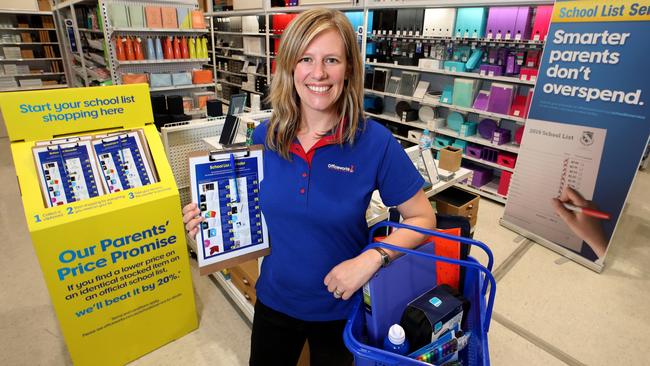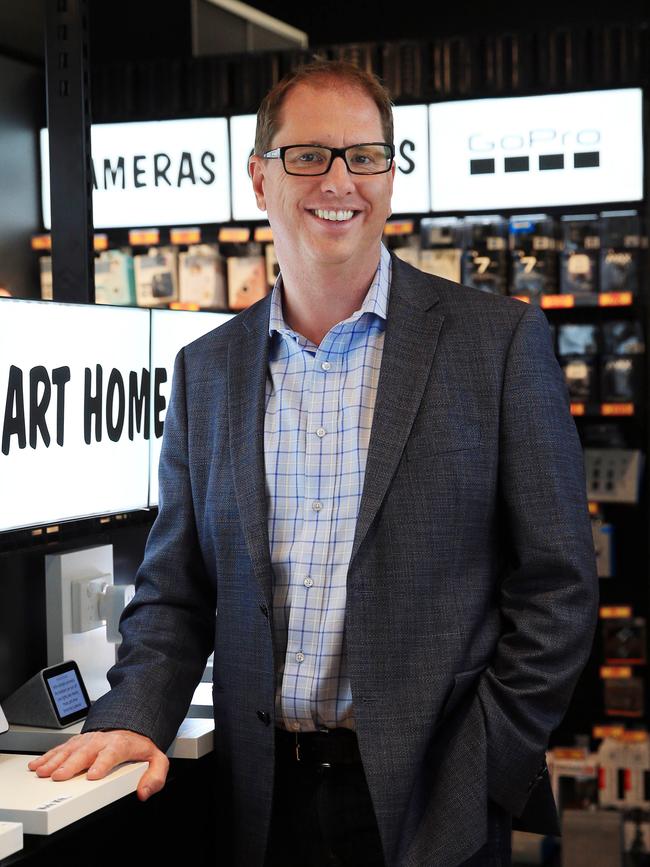$60bn spending lift the key for Australia’s retailers
JB Hi-Fi chief executive Richard Murray believes retailers will never forget the key number of ‘$60 billion’.

Business
Don't miss out on the headlines from Business. Followed categories will be added to My News.
JB Hi-Fi chief executive Richard Murray believes retailers will never forget the key number of “$60 billion”, an estimate of the amount spent by Australians travelling overseas before COVID-19, with that money now staying within our borders and up for grabs by stores.
Addressing the Australian Retailers Association Leaders Forum on Wednesday, Mr Murray said that while international travel remained off the agenda, low interest rates, which were helpful for the property sector, were also very good for retail.
“We have suddenly discovered a number called $60bn of money that Australians spend overseas. They can’t leave for the moment and I think for most retailers they will never forget that number again,” Mr Murray said.
“We feel for international tourism operators in Australia and people involved in the tourism scene. The harsh reality is that money is staying in Australia, and obviously with low interest rates being pretty good for the property market, it is pretty hard to find a builder and it has been very good for retail.
“So long as Australians aren’t travelling those settings are positive for us.”
Mr Murray said it was a more difficult challenge to predict the outcome for retail when international borders reopened and economic and retail settings normalised.
“That is the question for all of us, whether it’s six, 12, 18 or 24 months, it will have to normalise — there are going to be some big numbers to cycle.
“At the moment sales are stronger than what we might have thought 12 months ago and that’s absolutely a reflection of government stimulus, and net-net it has been a pretty good management of the crisis from an economic perspective.”

Earlier at the ARA forum Ian Bailey, the managing director of Kmart Group, the Wesfarmers division that operates Kmart, Target and online retailer Catch, said the retail sector was winning a greater share of the consumer wallet as there was a narrowing of options to spend discretionary money.
“What we are seeing is that customers have less options to spend their money than they did, so things like international travel, some of the sporting events still have restrictions and numerous other elements of what people would normally do have been restricted,” Mr Bailey said.
“And that has of course meant there is more money available for the retail sector.”
Mr Bailey said that would continue for some time until consumers returned to a more normal spending pattern.
“In the near term there are lots of reasons to be very optimistic about spending patterns maintaining across the retail sectors, but of course when we do come out of the pandemic and we do return to a more normal world I think the probability is that will be a tougher economic environment than pre-COVID. That is when pressure is really on the retailers to serve customers and to the best of their ability.”
Officeworks managing director Sarah Hunter noted shoppers had shown a propensity to return to stores once they believed it was a safer environment in the wake of the COVID-19 pandemic, with consumers also using technology to view products in store.
She said there were differences between the states, depending on their COVID-19 environment, but overall consumers were returning to stores.
“I know as a Victorian having to go through lockdown and homeschooling and all the joys, or not, of that, my propensity to click and collect and my love of click and collect has certainly grown, and we certainly see that in our Victorian customer base.”
Ms Hunter said that in Queensland and Western Australia, while Officeworks customers still loved online shopping, they had also enjoyed visiting a “safe store” as well.
Victorians loved getting back into stores once lockdown ended, she said.
“A lot of our research said that they really enjoyed the space in stores, and they are really enjoying the convenience of new technology, things like QR codes being introduced.
“We are pretty familiar now with checking in and out of stores, and using QR codes. And customers are really enjoying the opportunity to explore range in store with the use of technology.”
Originally published as $60bn spending lift the key for Australia’s retailers




